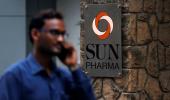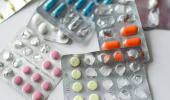US accounts for a large part of revenue for top Indian pharma companies like Gland Pharma (54 percent), Dr Reddy's (53 per cent), and Aurobindo Pharma (48 per cent).

In a move aimed at reducing drug prices in the United States (US), President Donald Trump signed an executive order on May 12, linking the prices of prescription drugs in that country to “most-favoured-nation” (MFN) pricing. The order seeks to facilitate “direct-to-consumer” purchase at the MFN price for pharmaceutical manufacturers selling their products to American patients.
It also aims to bring drug prices in the US in line with “comparably developed nations”, which will serve as MFN price targets for pharma manufacturers.
Even as the implementation of the order and its impact on Indian pharma companies remain unclear, this may be a good time to look at the prices and patterns of drug consumption in the American market, and the interdependence between the US and Indian pharma industries.
In 2022, at least 90 per cent of drugs prescribed in the US (by volume) were unbranded generics, but their share in sales (by value) was just 8 per cent.
In contrast, just 7 per cent of prescription medicines that were “branded specialised drugs” had an 87 per cent share in sales value.
This sales value-to-volume ratio for branded specialised drugs in the US is 5-6 times higher than that in other comparably developed countries, indicating very high prices for such drugs in the US when compared with other nations (Chart 1).

The prices of branded specialised drugs in the US were 422 per cent of those in other Organization for Economic Cooperation and Development (OECD) countries.
However, the prices of unbranded generics in the US were just 67 per cent of those in other OECD nations.
In total, the prices of all prescription drugs in the US were 278 per cent of those in other OECD countries (Chart 2).

Nearly 35 per cent of India's pharma exports went to the US in FY25, breaching the $10 billion mark.
Such exports have more than doubled since FY18 (Chart 3).

Further, India's share in the supply of prescription drugs to the US almost doubled from 22 per cent in 2013 to 42 per cent in 2022, even as the share of US companies remained roughly the same during this period (Chart 4).

The US accounted for a large part of revenue for top Indian pharma companies like Gland Pharma (54 percent), Dr Reddy's (53 per cent), and Aurobindo Pharma (48 per cent) (Chart 5).

Cumulative savings for the US healthcare system on account of Indian generic drugs and biosimilars stood at $419 billion in the 2013-17 period, and $903 billion in 2018-22.
In 2022, Indian companies accounted for 47 per cent of all generic drugs and 15 per cent of all biosimilars sold in the US (Chart 6).

Feature Presentation: Rajesh Alva/Rediff










